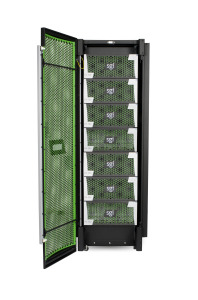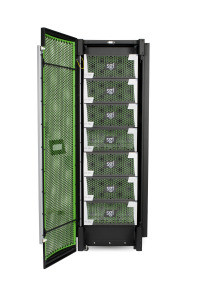 This week SGI announced that the City University of New York (CUNY) has selected an SGI UV 300 supercomputer to support the university’s interdisciplinary research and educational activities through SGI’s platinum partner Comnetco, Inc.
This week SGI announced that the City University of New York (CUNY) has selected an SGI UV 300 supercomputer to support the university’s interdisciplinary research and educational activities through SGI’s platinum partner Comnetco, Inc.
At CUNY today, we are seeing increased emphasis on collaboration and interdisciplinary research across the social sciences, computer science and mathematics. And new research in psychology, sociology, and linguistics increasingly depend on applying graph theoretic algorithms and combinatorics to discover relationships embedded in large, complex social science datasets,” said Paul Muzio, director, CUNY HPC Center. “The SGI UV 300, with its large shared memory, provides a unique capability for researchers to develop new methodologies and algorithms for interdisciplinary research needed to support social sciences research.”
“For example we’re already seeing the value of supercomputing emerge at the intersection of psychology and computer science as Dr. Dan McCloskey (Psychology), and Drs. Susan Imberman and Michael Kress (Computer Science) continue to study highly complex social behaviors among naked mole-rats,” Muzio added. “By implanting RFID sensors among hundreds of naked mole-rats the team is able to investigate the relationship between the social behavior of mole-rats within a research colony and the neurological brain structure of individual mole-rats. The team gathers a continuous stream of social interaction data from the RFID devices and creates three-dimensional graphs – or sociograms – that map each individual interaction. By combining graph theory-based analysis of social behavior with neuroscience tools the team can draw conclusions about how different parts of the brain impact social behavior.
As the third largest university system in the United States, CUNY provides high-quality, accessible education for more than 269,000 degree-credit students and 247,000 adult, continuing and professional education students at 24 campuses across all five boroughs of New York City. The University is an integrated system of senior and community colleges, graduate and professional schools, research centers, institutes and consortia.
To ensure its broad base of university researchers maintain the computational power needed to solve the complex graph theory problems they face, CUNY selected to upgrade its infrastructure to the SGI UV 300 advanced symmetric multiprocessing (SMP) system, configured with 32 sockets and 384 cores using Intel Xeon E7-8857 v2 processors, 12 terabytes (TB) of cache-coherent shared memory, and eight Nvidia Kepler GPUs. With a combination of the latest SGI NUMAlink 7 interconnect in a new all-to-all topology, the SGI UV 300 provides unprecedented gains in both high bandwidth and ultra-low latency in-memory computing for high performance data analytics applications.
The CUNY SGI UV 300 system will be named after Kenneth Appel, CUNY alumnus who, in 1976 with colleague Wolfgang Haken, solved the four-color theorem in graph topology, proving that any two-dimensional map, can be filled in with four colors without any adjacent “countries” sharing the same color. This theorem was the first to be proved using a computer. The new SGI UV 300 system will enable a broad range of research projects in fields including psychology, cryptography, and genomics and phylogeny.
A multi-University mathematics research team led by Dr. David Allen of the Borough of Manhattan Community College/CUNY will use the new system to build complicated abstract mathematical objects based on the Erdos-Renyi random graphs models and track a variety of mathematical phenomena including randomness. The team relies specifically on the in-memory computing power necessary to uncover the deep structure within these generalized graphs. The results of their study carry practical implications for communications security and will inform pure mathematics research,” said Muzio.





